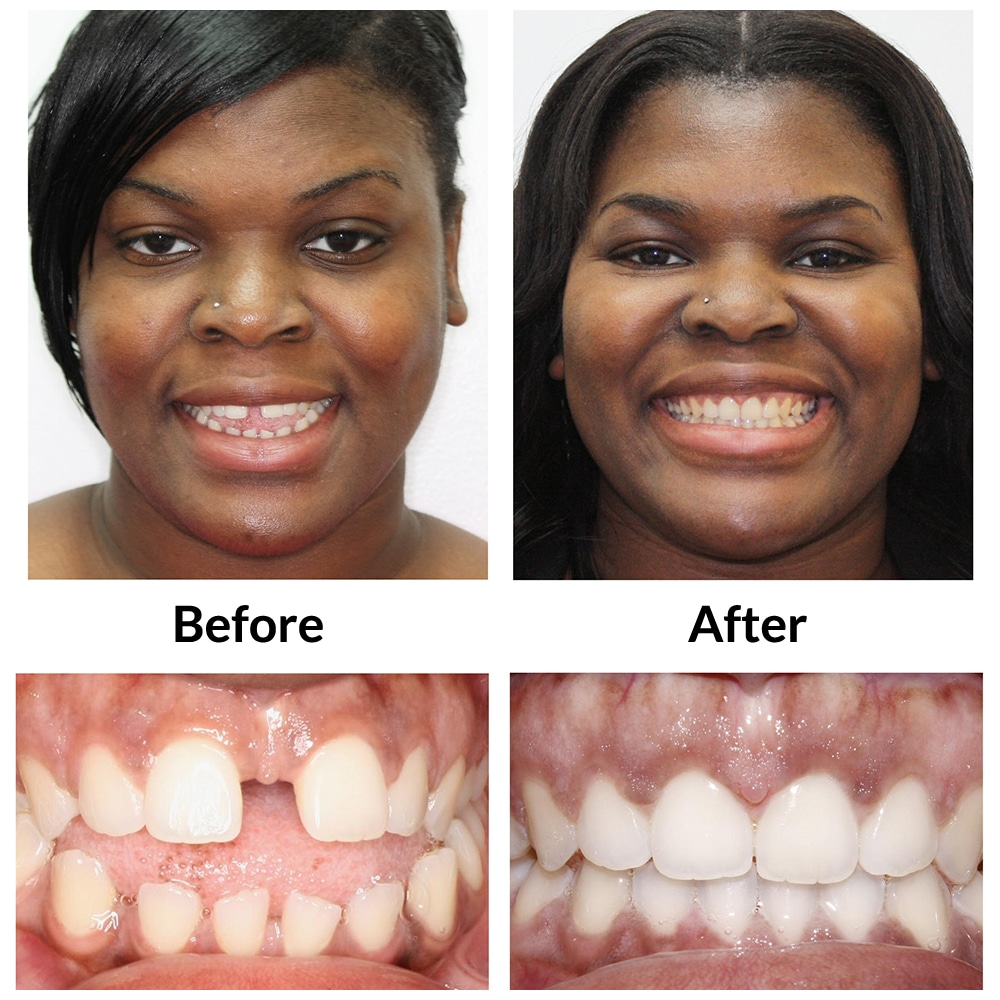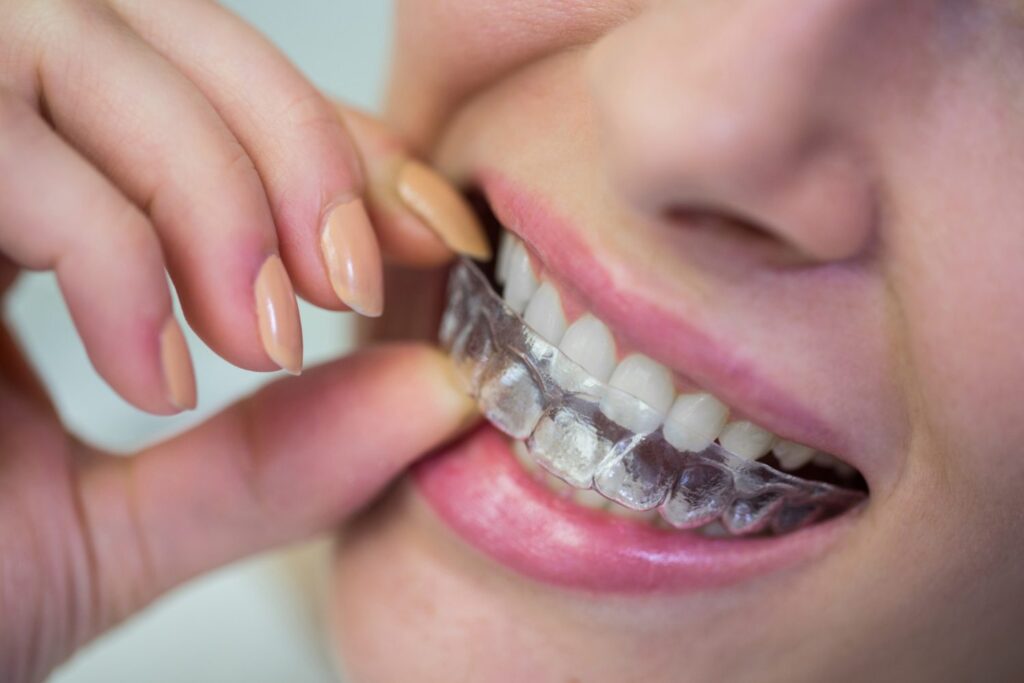Invisalign vs. Conventional Braces: Which Option Is Right for You?
When considering orthodontic therapy, the selection between Invisalign and standard braces offers numerous essential factors that merit cautious examination. Invisalign uses a discreet option with removable aligners, while traditional dental braces give a much more noticeable yet reliable solution for extreme imbalance. Each option incorporates distinct advantages and disadvantages connected to aesthetic appeals, comfort, therapy duration, and expense. Comprehending these subtleties is important for making an informed decision that lines up with your personal preferences and way of life. The concern stays: which alternative will finest meet your orthodontic requirements and expectations?
Review of Therapy Choices

In comparison, traditional dental braces are composed of steel braces and cables that are adhered to the teeth. This method uses continual pressure over time to accomplish alignment. While effective for complex orthodontic concerns, standard braces need regular gos to for adjustments and can posture challenges in preserving dental hygiene due to the trouble of cleaning about wires and braces.
Both alternatives have their qualities, and the selection often depends upon certain oral conditions, lifestyle preferences, and client conformity. Eventually, consulting an orthodontic professional is important for determining one of the most appropriate treatment strategy customized to specific demands. Recognizing the nuances of each option can considerably influence the total success of orthodontic therapy.
Aesthetic Considerations
A considerable element affecting the choice between Invisalign and typical braces is the aesthetic appeal each therapy provides. Invisalign aligners are crafted from clear plastic, making them basically unseen when put on. This very discreet look is specifically appealing to grownups and young adults who might really feel awkward regarding their orthodontic therapy. The ability to preserve a natural smile throughout the placement procedure can substantially improve the patient's confidence in expert and social settings.
In contrast, typical dental braces include metal braces and cables, which can be extra recognizable. While advancements in orthodontic modern technology have brought about the development of smaller sized brackets and colored elastics, traditional braces still preserve an even more noticeable account. For some people, the exposure of dental braces might deter them from looking for essential therapy.
Inevitably, the option in between Invisalign and conventional braces may rest on personal preferences regarding aesthetics. People who prioritize discernment often favor Invisalign, while those that are much less worried concerning presence might go with traditional dental braces. Recognizing the visual ramifications of each alternative is crucial for making an educated decision that lines up with one's way of life and choices.
Comfort and Convenience

In terms of ease, Invisalign aligners are removable, allowing people to appreciate their favorite foods without limitation and preserve optimum oral health. Cleaning and flossing are simplified, as the aligners can be secured throughout these regimens, whereas typical dental braces need cautious maneuvering around braces and cables.
Additionally, Invisalign's dynamic system enables less orthodontic brows through. Patients generally obtain multiple collections of aligners simultaneously, which can simplify the therapy procedure and lower time spent in the orthodontist's chair. In comparison, standard dental braces demand routine adjustments, making them less convenient for those with busy timetables. Invisalign. On the whole, the convenience and comfort of Invisalign make it an appealing selection for numerous individuals seeking orthodontic therapy.
Treatment Period and Effectiveness
While both Invisalign and standard dental braces are effective in correcting dental misalignments, the period of treatment can differ significantly between the 2 options. Usually, Invisalign treatment can take anywhere from 12 to 18 months, depending on the complexity of the instance. The clear aligners function by gradually changing teeth right into their preferred placements, and regular follow-ups with an orthodontist assistance make certain progression remains on track.
On the other hand, traditional braces commonly call for a longer commitment, generally varying from 18 months to 3 years. This results from their fixed nature and using braces and cables, which can be more reliable for complicated instances and serious misalignments (Invisalign). The therapy performance of traditional dental braces is well-documented, as they permit for precise modifications and greater control over tooth activity
Ultimately, the selection between Invisalign and conventional braces may depend upon both the expected treatment period and the details oral issues at hand. Consulting with an orthodontist is important, as they can give customized referrals based upon specific requirements, guaranteeing the picked method aligns with desired timeframes and results.
Cost Comparison and Insurance Options
Price plays a significant role in the decision-making process for individuals taking into consideration orthodontic treatment, whether choosing Invisalign or traditional dental braces. On standard, the expense of Invisalign arrays from $3,000 to $8,000, while typical braces generally cost between $2,000 and $6,000. Aspects influencing these prices include the complexity of the situation, the duration of try this out therapy, and geographical location.
Several dental insurance policy strategies offer partial protection for orthodontic therapies, yet the specifics can differ extensively. Usually, typical dental braces might be a lot more regularly covered by insurance policy strategies compared to Invisalign, which some insurance providers classify as an aesthetic treatment.
Additionally, numerous orthodontic methods offer adaptable payment plans, making both treatment alternatives extra available. Patients need to ask about prospective funding choices and price cuts for upfront payments. Assessing the total cost, consisting of insurance policy advantages and layaway plan, is important for making a notified choice that lines up with both aesthetic choices and budget plan factors to consider.

Verdict
In summary, the choice in between Invisalign and typical dental braces pivots on several elements, consisting of visual choices, convenience, therapy duration, and price. Invisalign offers a very discreet, detachable choice that promotes oral hygiene and nutritional flexibility, while conventional braces may be preferable for complicated oral concerns and frequently come at a reduced cost factor. Inevitably, consultation with an orthodontist is important to examine specific scenarios and figure out the most suitable therapy option for accomplishing optimal dental positioning.
When considering orthodontic therapy, the option in between Invisalign and typical braces offers a number of vital elements that merit careful assessment.Contrasting Invisalign and typical braces exposes distinctive therapy choices for get redirected here orthodontic correction.While both Invisalign and typical braces are reliable in correcting dental misalignments, the duration of therapy can vary substantially between the 2 alternatives.Cost plays a significant role in the decision-making process for individuals thinking about orthodontic therapy, whether choosing for Invisalign or typical dental braces.In recap, the option between Invisalign and typical dental braces pivots on several factors, including aesthetic preferences, convenience, treatment period, and expense.